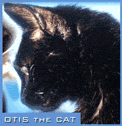Anton Ptushkin–director of the PBS Nature documentary profiling the efforts of Ukrainian citizens to rescue animals amidst the destruction of the war—describes the sort of travel pieces he produced as a YouTuber, before he morphed into a war correspondent. Ptushkin notes that this transformation wasn’t the product of a specific ambition, but
Ptushkin notes that this transformation wasn’t the product of a specific ambition, but rather, reflected an inevitable need he and his colleagues felt to cover the conflict unfolding across the country. Similarly, he says, the decision to make “Saving the Animals of Ukraine” was born of a desire to chronicle the war’s wreckage by telling the stories of these efforts to extricate an array of animals literally from harm’s way…and the potent parallel here between animals and people. Ptushkin first cites the story of Patron, a Jack Russell Terrier who becomes a bomb-sniffing dog, so effective at this work—at saving countless lives—that he was honored by UNICEF, named a UNICEF Ukraine official AmbassaDog. (I point out that–for those, like me, who are concerned about the risks for dogs deployed to locate mines—it was comforting to learn that Patron weighs too little to trigger an explosion.) Throughout “Saving the Animals of Ukraine,” Ptushkin tells a string of inspiring and compelling stories, some of which he shares in our conversation. Patron was one. Another was Shafa, the cat with “a mean face,” who was spotted in the bombed-out ruins of the seventh floor apartment where he’d been stranded for 60 days, with no food or water. In our chat, Ptushkin calls attention to the
rather, reflected an inevitable need he and his colleagues felt to cover the conflict unfolding across the country. Similarly, he says, the decision to make “Saving the Animals of Ukraine” was born of a desire to chronicle the war’s wreckage by telling the stories of these efforts to extricate an array of animals literally from harm’s way…and the potent parallel here between animals and people. Ptushkin first cites the story of Patron, a Jack Russell Terrier who becomes a bomb-sniffing dog, so effective at this work—at saving countless lives—that he was honored by UNICEF, named a UNICEF Ukraine official AmbassaDog. (I point out that–for those, like me, who are concerned about the risks for dogs deployed to locate mines—it was comforting to learn that Patron weighs too little to trigger an explosion.) Throughout “Saving the Animals of Ukraine,” Ptushkin tells a string of inspiring and compelling stories, some of which he shares in our conversation. Patron was one. Another was Shafa, the cat with “a mean face,” who was spotted in the bombed-out ruins of the seventh floor apartment where he’d been stranded for 60 days, with no food or water. In our chat, Ptushkin calls attention to the  important
important detail that Shafa is 13-years-old. As depicted in the film, Shafa not only survived, but eventually became a social media star. And the Shafa saga clearly struck a chord, eliciting a big string of financial donations from people affected by Shafa—as a symbol of the war—and wanted to do something. Along the way, as the film (and conversation) unspools, we meet (and address) other notable animals, including: Bretzel, a lion who’d been confined to a very small enclosure near the front lines, so the shelling was particularly traumatizing—he clearly has PTSD, mitigated by being relocated to a sanctuary in Spain; Dimitry Revnyuk, founder of the animal rescue organization Zoopatrul/Zoopatrol, is shown innovating methods to feed abandoned pets in locked apartments, and later, with some of the donations that have poured in, he constructs a shelter. (pbs.org/nature, facebook.com/PBSNature, instagram.com/pbsnature; youtube.com/naturepbs, tiktok.com/@pbsnature) [Photos by Anton Ptushkin]
detail that Shafa is 13-years-old. As depicted in the film, Shafa not only survived, but eventually became a social media star. And the Shafa saga clearly struck a chord, eliciting a big string of financial donations from people affected by Shafa—as a symbol of the war—and wanted to do something. Along the way, as the film (and conversation) unspools, we meet (and address) other notable animals, including: Bretzel, a lion who’d been confined to a very small enclosure near the front lines, so the shelling was particularly traumatizing—he clearly has PTSD, mitigated by being relocated to a sanctuary in Spain; Dimitry Revnyuk, founder of the animal rescue organization Zoopatrul/Zoopatrol, is shown innovating methods to feed abandoned pets in locked apartments, and later, with some of the donations that have poured in, he constructs a shelter. (pbs.org/nature, facebook.com/PBSNature, instagram.com/pbsnature; youtube.com/naturepbs, tiktok.com/@pbsnature) [Photos by Anton Ptushkin]
 ALSO: I played back the interview I’d recorded the previous day with Largo Police Sgt. Haley Sequiera. She’s the handler of Pension, the Department’s first therapy dog, brought in with the intention of providing comfort to Largo Police employees and to reduce the anxiety of crime victims. Sequiera recounts how she researched and otherwise undertook the preparations for implementing the department’s inaugural therapy dog program. She described Pension–a one-year-old rescue, a “mix”—and the thorough training the dog underwent, followed by the extensive extensive training Sequiera and Pension went through as a team, in preparation for this new assignment. Sequiera gives an account of how she and Pension—now officially deployed—spend their days. [Photo Courtesy of Largo Police Department]
ALSO: I played back the interview I’d recorded the previous day with Largo Police Sgt. Haley Sequiera. She’s the handler of Pension, the Department’s first therapy dog, brought in with the intention of providing comfort to Largo Police employees and to reduce the anxiety of crime victims. Sequiera recounts how she researched and otherwise undertook the preparations for implementing the department’s inaugural therapy dog program. She described Pension–a one-year-old rescue, a “mix”—and the thorough training the dog underwent, followed by the extensive extensive training Sequiera and Pension went through as a team, in preparation for this new assignment. Sequiera gives an account of how she and Pension—now officially deployed—spend their days. [Photo Courtesy of Largo Police Department]
COMEDY CORNER: Jim Gaffigan’s “A Good Dad/I Rescued A Dog” (https://jimgaffigan.com)
MUSIC: Rebekah Pulley’s “Talking Animals Theme,” instrumentals
NAME THAT ANIMAL TUNE: We didn’t play “Name That Animal Tune” today.
AUDIO ARCHIVE:
Listen Online Now:



